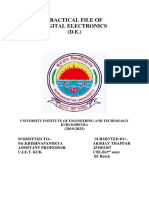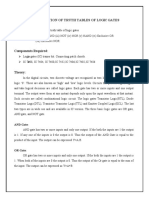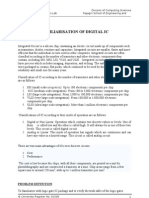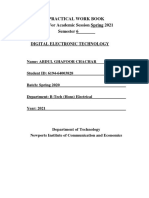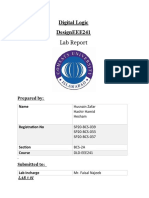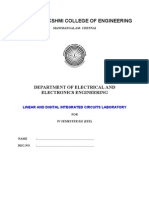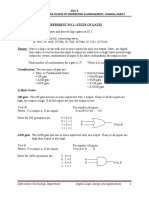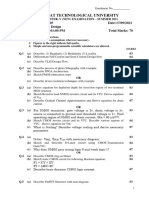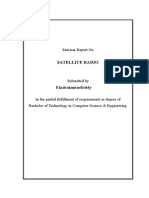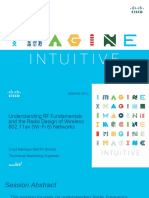0% found this document useful (0 votes)
9 views13 pagesCse It Manual
The document outlines a series of laboratory experiments conducted in the Analog & Digital Electronics Laboratory at Netaji Subhas Engineering College, focusing on the realization of various logic gates, decoders, multiplexers, full adders, and flip-flops using universal logic gates. Each experiment includes objectives, required equipment, theoretical background, circuit diagrams, and truth tables. The experiments aim to provide practical understanding and application of digital electronics concepts.
Uploaded by
adi2006mishraCopyright
© © All Rights Reserved
We take content rights seriously. If you suspect this is your content, claim it here.
Available Formats
Download as DOCX, PDF, TXT or read online on Scribd
0% found this document useful (0 votes)
9 views13 pagesCse It Manual
The document outlines a series of laboratory experiments conducted in the Analog & Digital Electronics Laboratory at Netaji Subhas Engineering College, focusing on the realization of various logic gates, decoders, multiplexers, full adders, and flip-flops using universal logic gates. Each experiment includes objectives, required equipment, theoretical background, circuit diagrams, and truth tables. The experiments aim to provide practical understanding and application of digital electronics concepts.
Uploaded by
adi2006mishraCopyright
© © All Rights Reserved
We take content rights seriously. If you suspect this is your content, claim it here.
Available Formats
Download as DOCX, PDF, TXT or read online on Scribd
/ 13























